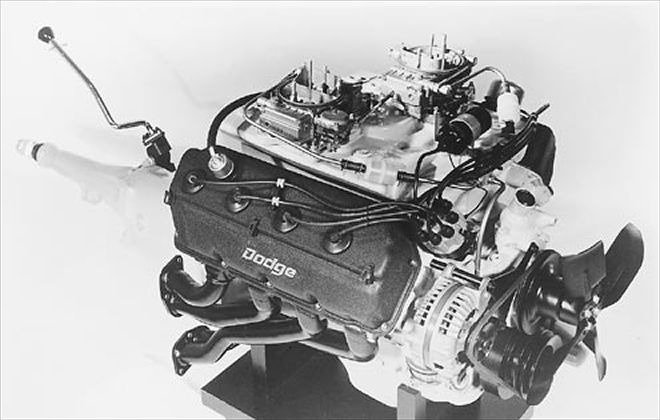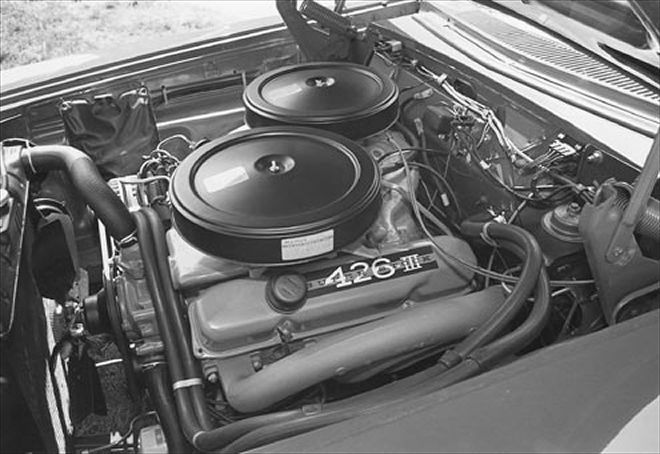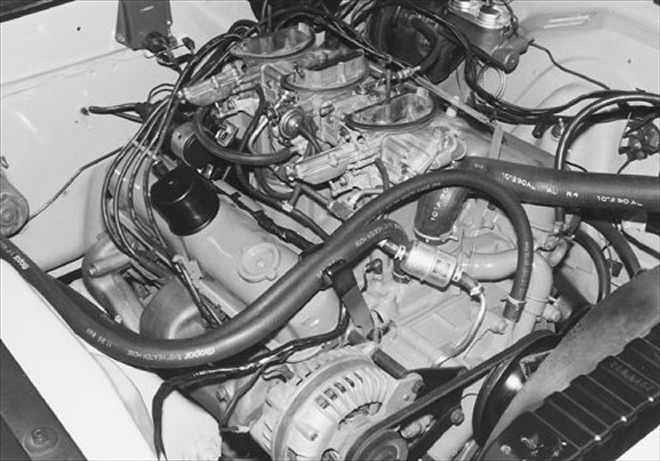
One of the greatest things about having an old Mopar is rolling up the garage door, loading the kids, and driving down to the local cruise on a Friday night. Driving an old car in a sea of wind tunnel designed aero-blobs is a wonderful experience. It’s a blast to cruise down the road and watch people’s reactions— the thumbs-up, horn toots, points, and smiles make all the skinned knuckles, smashed thumbs, and sleepless nights distant memories.
Have you ever had someone ask you what engine was sitting under the hood of your Plymouth Breeze while you filled the tank? When’s the last time a total stranger sat in a parking lot waiting for you to walk up so he could ask you what year your Grand Caravan was?
Of course, there is a down side to driving our vintage iron—breakage. Nobody wants to spend countless hours and easily counted dollars restoring a car to factory specs only to go out and destroy the engine because of a missed shift on Saturday night.
A million different factors can be used to determine why one car is worth a small fortune, and the other isn’t. However, one thing is certain—if it doesn’t have the original matching-numbers drivetrain, it’s not worth as much, period! Crunch a fender; it’s fixable. Drive the car in a river; it’s fixable. We’ve even heard of cars that caught fire and practically burned to the ground, and they were fixable. But grenading a numbers-matching block is the equivalent of driving a new car off the lot—even though the rest of the car is perfect, it’s worth half as much.
There are ways to fix shattered cast iron, but location is relative. We know a guy with a Hemi in his Charger. Since the engine isn’t original to the car, we asked him if he’d ever considered tracking down the car the engine went to and seeing if the owner would be interested in trading him a new MP Hemi block so they could reunite the original engine and car. He said he’d love to, but his block had been windowed at one time and repaired—the errant rod had exited exactly where the VIN was stamped, obliterating it for all time.
It’s sad, but it happens. Is that enough reason to leave your car sitting in the garage under a tarp—because you don’t want to destroy an “investment” or a piece of history? That’s enough reason to save the engine, but not to park the car.
Here’s our solution: put together a look-alike engine, drop it in and moth-ball the gennie. It’s not cheap, but it has some definite advantages. First and foremost, if you miss a shift, that river of oil streaming from the hole in your oil pan isn’t the catastrophic event it could have been. And why would you miss a shift hard enough to blow the engine in the first place? Because you were running it hard and having fun with it! Yeah, it’s a bummer if it blows, but it was in the name of a good time, and it’s not a mistake that is going to haunt you for the rest of your life. Would you have risked it with the numbers-matching block? Of course not. It just isn’t as much fun driving a car if you have to worry about hurting the irreplaceable original drivetrain every time you drive it.
Unfortunately, most of the engines in stock form aren’t friendly enough for regular cruising. For instance, it’s common practice among Hemi owners to detune the engines to make them live on the street—specifically, lowering the compression ratio so they can run on pump gas. The same is true about the heads in any vintage Mopar—you risk having the machine shop mess them up when they put in hardened seats to run on Premium gas, or you have to cough up the extra cash at every fill up for a can of octane boost. Unfortunately, we know guys who won’t burn anything but race gas in their car because of the exhaust seats. Then their reason for not driving the car is that the gas bill is too expensive.
Back to the Hemi example: The new Mopar Performance 426 Hemi makes more power than the originals ever did at 465hp and 486 lb-ft of torque, and it’s only squeezing a 9:1 compression ratio! Same with the 505-horse 500 inch Wedge—500 lb-ft of torque and only 9:1 compression. Try making that kind of power with your original 6-Pack engine.
Finally, here’s something we bet you’ve never thought about—dropping a re-pop engine in your car and driving it might actually increase it’s value! Think about it. If you were looking at buying a restored car and had two otherwise equal candidates to choose from, which would you take: The ’69-½ Six Pack Superbee that was restored to perfect condition, or the ’69-½ Six Pack Superbee that was in perfect condition, but it’s original engine was stored in a big blue box in perfect shape, and under that lift-off hood was the 505-horse Crate Motor with a reproduction six pack set up? Which will you have more fun with? Even if you don’t want the hot engine, isn’t it nice to know the original—which you can easily inspect—wasn’t abused?
Just for fun, we put together a fantasy list of engines we’d love to build featuring the look of the vintage originals, but the technology and fresh parts from today. Check 'em out in the sidebars below and see if you don’t think we might just be on to something here.

Race Hemi
The Race Hemi was the best of the best, and is also one of the hardest to come by in original condition. Due to the very nature of their intended usage, breakage was expected. If you have an original, then we’re not telling you anything new. Most owners wouldn’t dream of putting them on the street, but there are a few who do. Just to the west of us in the Tampa area, Paul Emiro has a ’68 Super Stock Barracuda (Super Street Stock, Mopar Muscle, March 1998) that he’s repainted and added graphics to, and he drives it regularly to shows and such.
 Coming in 2000! New Max Wedge Cross Ram intake manifold. Look for its release from Mopar Performance soon!
Coming in 2000! New Max Wedge Cross Ram intake manifold. Look for its release from Mopar Performance soon!
Mad Max
This was actually the surprise engine of the bunch. We thought it would be hard to replicate an original Max Wedge powerplant, but thanks to Mopar Performance, it's easier to build one than it's ever been. They've released a new, fully-jacketed 426 Wedge Block, and coming this year are several different Max Wedge cylinder head options. With new, correct Holleys, or a set of Carter or Edelbrock AFBs, the only thing missing is the Cross Ram. Knowing this, Mopar is planning to release brand new, reproduction intakes sometime in 2000.
 Pick A Head! Just in A-engines, you can choose from one of five bare castings, one fully-assembled head and three ported head assemblies from Mopar Performance!
Pick A Head! Just in A-engines, you can choose from one of five bare castings, one fully-assembled head and three ported head assemblies from Mopar Performance!
340 6-Pak
The 340 engines are legendary for the power they made. Designed for Trans Am racing, the little motors were known for high winding revs. It seems there is an almost endless supply of small block parts, and recreating a 340 Six Pack wouldn't be hard to do.
500-6
Visually recreating a 440-6 is a no-brainer. Sure, you can find a used 440 block, scrounge for a steel crank, get the good rods and dig around until you find a decent set of usable heads, but you're still using old parts. You can even open the motor up a bit and stroke it, but are you going to get anywhere near 500 inches? Affordably? With that kind of power? Probably not. Just imagine how much fun you'd have with 500 inches and 545hp sitting under the three deuces!